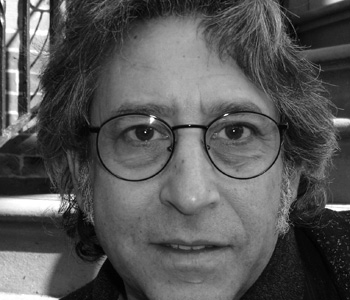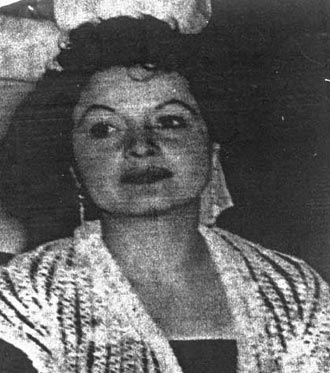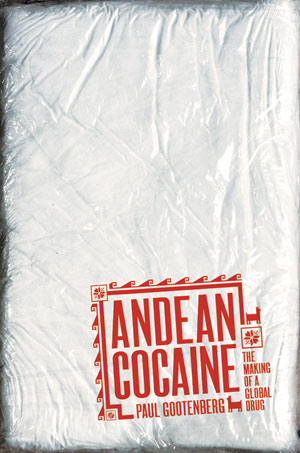
Andean Cocaine is cocaine’s first full-length biography. The book is, I hope, a more “serious” than usual history of the infamous drug, covering more than a century from cocaine’s birth as a coveted medicinal good of the 1860s to its rebirth as the controversial specialty of the Colombian traffickers in the 1970s.
I went for a striking new narrative, based entirely on fresh historical evidence, including specially declassified papers of the United States Drug Enforcement Administration, the DEA. Global in context, Andean Cocaine traces cocaine’s origins back to its historic homeland in the Andes–the tropical zones of eastern Peru–an area which has played an underestimated yet pivotal role in cocaine’s emergence as a modern illicit drug.
“The stalwart anti-communist and anti-drug Nixon regime, in actions both abroad and at home, spurred the 1970s age of cocaine.”
I like to think of Andean Cocaine as a hidden chapter in the history of globalization. Today, cocaine, as part of a colossal global criminal enterprise, is the most valuable single commodity we get from Latin America, worth more than $35 billion yearly in street value. Cocaine is arguably the most successful and “emblematic” of all South American commodities. As a criminal activity, cocaine feeds into some of our basic anxieties and stereotypes about Latin Americans. The drug also has had a massive social, political and even pop-cultural impact on our country, especially during its boom years of the 1980s.
The world is experiencing an upsurge of seemingly menacing illicit flows: drugs, arms, sex trades, blood diamonds, piracy, illegal migrants, counterfeit goods, and the like. How did such massive new illicit trades arise? What do they tell us about the other side of globalization? Andean Cocaine offers three answers to this riddle.
First, cocaine has always been molded by politics, even as a legal good until the 1940s in the Andes, and its remaking into a volatile illicit trade was driven by the politics of the U.S. Cold War. It is no accident, I show, that the stalwart anti-communist and anti-drug Nixon regime, in actions both abroad and at home, spurred the 1970s age of cocaine.
Second, despite a surprising array of actors the book touches in cocaine’s history—the French, Germans, Dutch, Japanese, Cubans and Chileans—the most powerful if obscured influence has been the long relationship between the United States and the eastern Andes. We’ve been involved with the drug since its beginnings—cultural amnesia about Coca Cola aside—and our exported drug policies lay behind the drug’s unexpected resurgence as an illicit threat after World War II.
Third, an intriguing aspect of cocaine’s story is how South Americans themselves acted as vibrant innovators with the drug—from the local science that established it as a modern 19th-century commodity to the bit-by-bit ground-up building of its trafficking networks in the post-war era. Cocaine is a deeply entrenched regional enterprise — one reason why cultural outsiders (from the mob to the DEA) find it so impossible to control from abroad.
My own path to cocaine history is part of the story. I’m a “recovering” economic historian of the Andes. Some of my earlier books dealt with the even odder case of 19th-century guano, bird-dung fertilizer exports that made Peru wildly and temporarily rich in the 1850s. Doing another Andean commodity came naturally, especially since as a sober and penurious grad student, I had totally missed out on the actual cocaine boom of my youth. The exciting new fields I had to tackle for this study—from medical history and the anthropology of the illicit to cultural studies—made this book a truly addictive writing project.
I use a number of lenses on cocaine’s history, but one revealing close-up concerns the actual “technology” of cocaine making.
Usually, the history of cocaine departs from the heroics of modern trained German scientists like Niemann, Merck, and Freud who discovered, made, or toyed with the newfound alkaloid Cocaine Hydrochloride (HC1) in the late 19th century. In Andean Cocaine, I follow the sinuous trail of another form of cocaine, so-called “crude cocaine” or cocaine sulfates. Crude cocaine is a simpler concoction, produced by using kerosene and other cheap local ingredients to reduce coca leaf to an alkaloid-rich cake. It is exported abroad for refining in pharmaceutical labs into medicinal grade HC1—or, now, mainly powder recreational “coke.”
Crude cocaine was actually invented in 1885 by an unknown pharmacist-researcher in Lima, Alfredo Bignon, and promoted by the Peruvian government to make cocaine widely available for export use, which it did. By the 1890s, this technique was adopted to the remote Amazonian coca-growing zones of eastern Peru. It served there as the “appropriate technology” for a highly successful legal cocaine export industry at the turn of the century, led by regional elite businessmen like Augusto Durand and Andrés Soberón. Over decades, their devotion to this regional trade kept backwoods knowledge of cocaine-making alive as the drug faded in other parts of the world.
When cocaine became criminalized in Peru after 1948, this exact same formula (in part passed along by actors like Soberón) transformed into the basis for onsite peasant production of “coca paste” or so-called PBC (short for Pasta Básica de Cocaína). PBC remains the key Andean input into today’s global criminal cocaine enterprise. Thousands of anonymous jungle peasants make it by mashing coca leaf with simple chemicals in makeshift plastic-lined pits, under the gaze of the DEA.
So, in contrast to modern corporate Western science, cocaine has a long hidden genealogy of local knowledge, honed by forgotten grassroots actors.

“Cocaine has a long hidden genealogy of local knowledge, honed by forgotten grassroots actors.”
Our historical engagement with cocaine has saddled the United States with festering social problems (such as the world’s highest rates of racial incarceration), a permanent war on drugs against the Andes, and new troubles along our border with Mexico. But knowledge of cocaine’s past has been both too anecdotal and too Eurocentric. Andean Cocaine places cocaine’s history in its genuine Andean context and recovers a lively host of Andean actors. I use new historical materials to analyze how our relationship with the drug was actually forged and rebuilt over the last century. This story offers insights that may help us, one day, to resolve our bad global relationship with the drug.
For educated readers, and for the millions who lived through or partook of the age of cocaine, I promise a fascinating read.


Paul Gootenberg, a former Rhodes Scholar with a Ph.D. from the University of Chicago, teaches Latin American history at New York’s public Stony Brook University. He lives in Brooklyn and has two beautiful children. Before turning to the considerably more exciting field of global drug history, he published a number of notable academic books in Andean history, including Between Silver and Guano: Commercial Policy and the State in Postindependence Peru (Princeton, 1989).